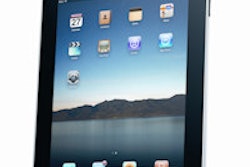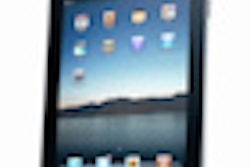
Medical professionals seeking to deploy Apple's new iPad for viewing diagnostic images will find a lot to like in the latest iteration of the tablet computer, including its high-resolution Retina display, which gives the device the resolution of a 3-megapixel PACS monitor.
Apple released the third-generation iPad on March 16.
"The higher-resolution display and faster 4G speed will only spur on the wave of referring doctors and radiologists who are beginning to depend on these mobile devices for access to images when not near a workstation," said David Hirschorn, MD, director of radiology informatics at Staten Island University Hospital and a research fellow in radiology at Massachusetts General Hospital and Harvard Medical School.
“When the new iPad is calibrated for proper display, the images are gorgeous.”
— Mark Cain, chief technology officer,
MIM Software
Generating particular excitement is the new iPad's Retina display, which has raised the tablet's resolution to the level of a 3-megapixel PACS monitor. This latest version of the iPad offers 2,048 x 1,536-pixel resolution at 264 pixels per inch, up from the iPad 2's 1,024 x 768-pixel resolution at 132 pixels per inch.
The higher resolution will enable large-format studies, such as some computed radiography and digital radiography exams to be read in their native resolution without having to scroll around the tablet.
"This will allow radiologists to get a global impression of the image, something that was not possible with lower-resolution devices," said Mark McEntee, PhD, a senior lecturer and director of honors at the University of Sydney's Brain and Mind Research Institute.
As a result, image review times on the new iPad ought to be equivalent to PACS monitors -- and perhaps faster than with the commodity displays often used for review.
While the new iPad will greatly reduce any concerns over the image resolution of these devices, the majority of x-rays will still require some panning at full-resolution, said Mark Cain, chief technology officer of MIM Software. MIM Software's Mobile MIM application was the first image viewing application to receive U.S. Food and Drug Administration clearance for diagnostic use on the iPhone and iPad.
The new iPad takes image quality to a whole new level for iOS devices, Cain noted.
"The contrast response of the new iPad is on par with the iPad 2, which is very good," he said. "When the new iPad is calibrated for proper display, the images are gorgeous."
In addition, the new iPad's support for 4G LTE networking capabilities will make it easier to download images and improve workflow for those not connected to Wi-Fi, noted Frederick Weiss, MD, of the University of Maryland. The iPad 2 only supported 3G.
However, while the new iPad offers a number of important advances that promise to improve its utility for viewing images, many believe there is still room for improvement. For example, display calibration remains an issue with the new tablet.
The inclusion of encryption software would also be nice, as would calibration software and brightness improvements, McEntee said.



















